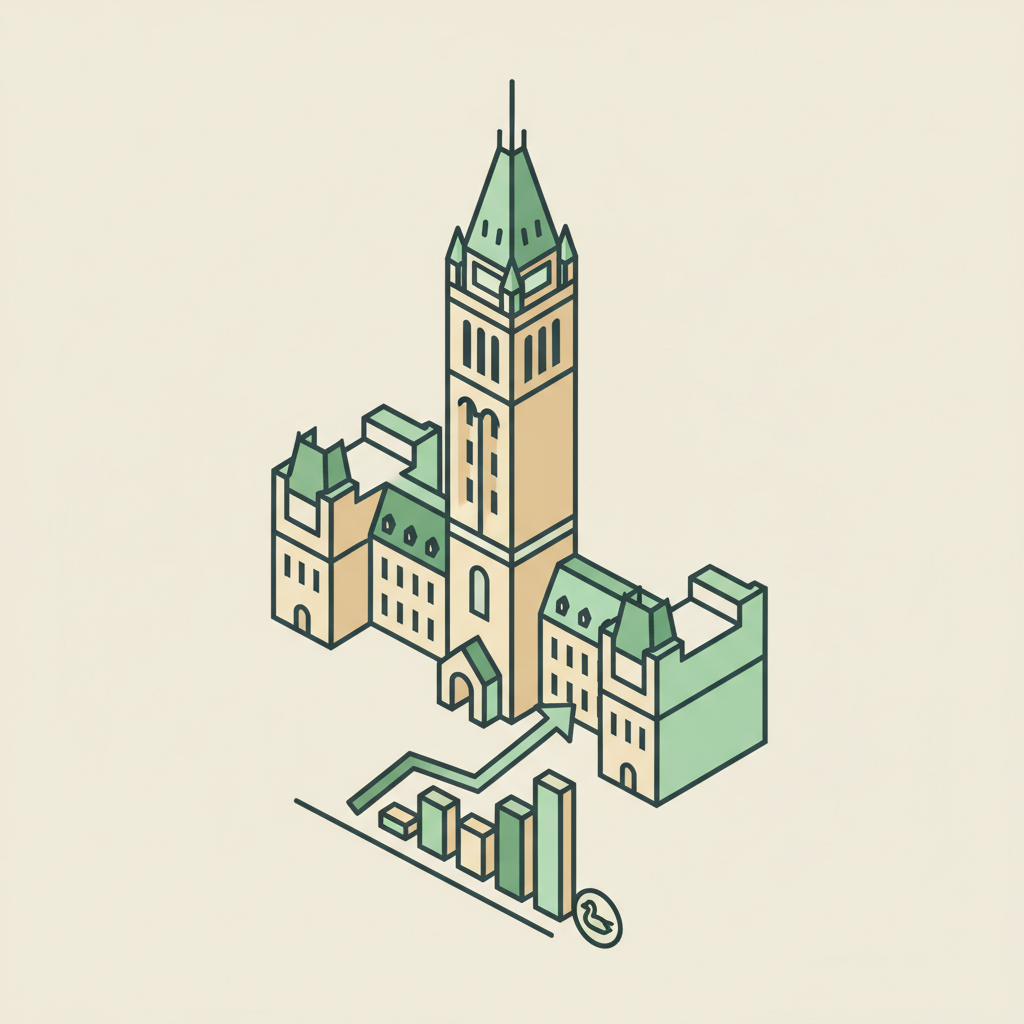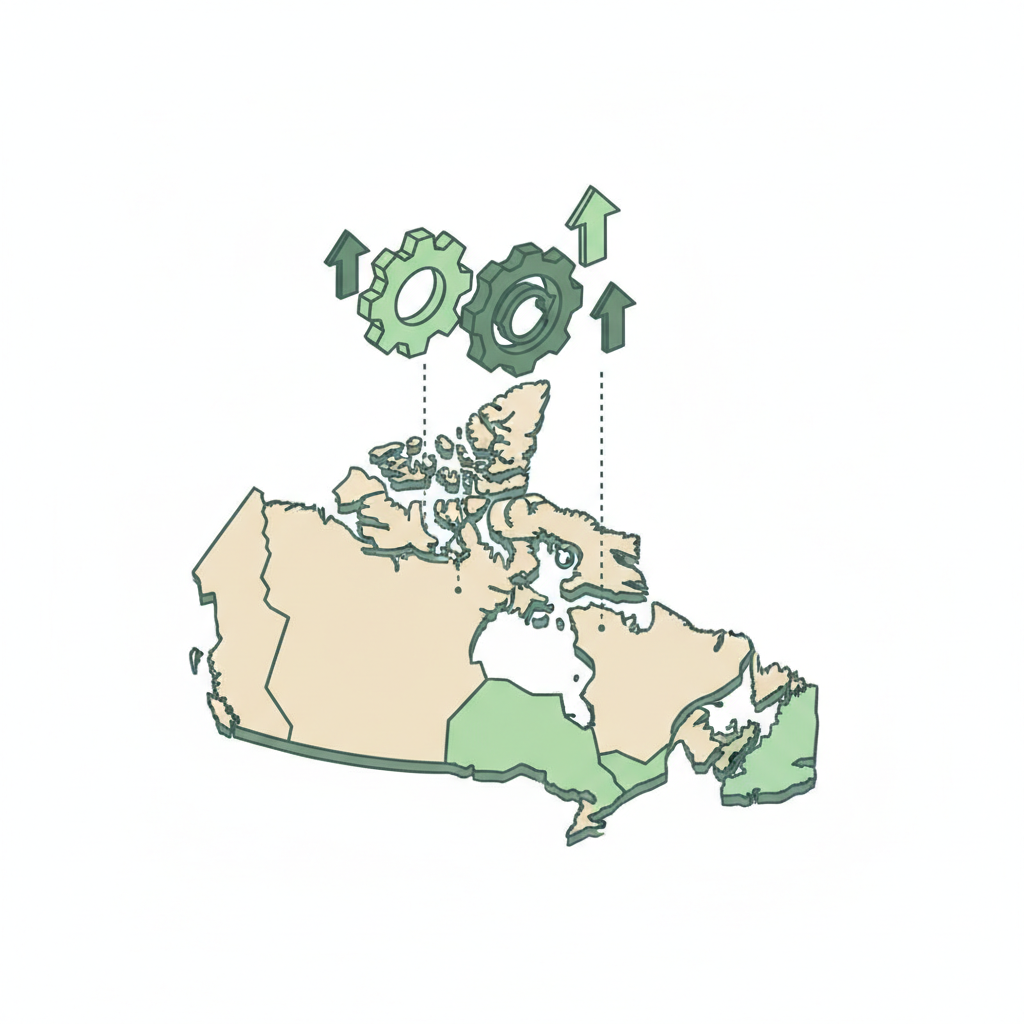As autumn deepens in Saint John, New Brunswick, local businesses and consumers are keenly watching the economic horizon. Recent national reports from the Bank of Canada offer a glimpse into the broader Canadian economic landscape, revealing a mix of cautious optimism and persistent challenges. These insights are crucial for understanding the currents shaping our city’s business environment as we head into the colder months and prepare for the holiday season.
The Bank of Canada’s latest surveys highlight how factors like interest rates, ongoing trade tensions, and evolving consumer behaviour are influencing economic activity across the country. While these reports provide a national overview, their implications resonate deeply within communities like Saint John, affecting everything from local spending habits to employment prospects.

Governor Tiff Macklem and Senior Deputy Governor Carolyn Rogers will discuss the Monetary Policy Report on October 29, 2025.
Consumer Confidence: A Modest Rebound Amidst Lingering Concerns
The Canadian Survey of Consumer Expectations (CSCE) for the Third Quarter of 2025 indicates a slight improvement in overall consumer sentiment. While the indicator, which tracks opinions on spending, the labour market, and personal finances, has risen modestly, it remains below levels observed before the recent trade conflict with the United States.
Saint John residents may find some relief in the national trend of less pessimism regarding financial health, with more Canadians feeling their situation has improved and are less likely to miss debt payments. However, the shadow of trade tensions continues to influence financial well-being, and intentions for discretionary spending, such as on big-ticket items or restaurant meals, remain subdued. High prices, economic uncertainty, and elevated housing costs are cited as the primary barriers to increased spending. For Saint John’s retail and hospitality sectors, this suggests a continued need for strategic pricing and value offerings.
Business Outlook: Cautious Planning and Soft Demand
Mirroring consumer sentiment, the Business Outlook Survey (BOS) for the Third Quarter of 2025 reveals a gradual recovery in business sentiment from early 2025 lows, though overall outlooks and intentions remain subdued. A growing number of firms, now 33%, are actively planning for a recession, up from 28% previously, underscoring persistent concerns about the impacts of trade tensions.
For Saint John businesses, this translates to continued weak sales expectations, largely due to the ripple effects of the trade conflict on business and consumer spending. However, there’s a silver lining: some retailers nationally reported a slight uptick in consumer spending, attributing it to factors like lower interest rates, reduced gas prices, and an increase in domestic tourism. This last point could be particularly relevant for Saint John, a city that benefits from local travel and staycations, especially as the holiday season approaches.
Labour Market and Wage Trends
Both surveys point to a softening labour market. The CSCE shows a lower likelihood of Canadians voluntarily leaving or finding a new job, a trend more pronounced among public sector workers, potentially due to federal expenditure reviews. Concerns about job loss are also elevated in trade-dependent sectors.
The BOS confirms subdued hiring intentions, with most firms not planning to expand their workforce. Wage growth expectations are also trending lower, returning to levels seen before the COVID-19 pandemic. This could mean a more competitive job market in Saint John, but also potentially easing some cost pressures for businesses.
Inflation and the Impact of Tariffs
Inflation remains a key concern. Short-term inflation expectations are stable but still above pre-pandemic averages, and longer-term expectations have picked up. Tariffs are identified as a significant driver of price increases, particularly for motor vehicles, and are seen as a major obstacle to the Bank of Canada’s ability to control inflation.
Businesses are experiencing increased input costs due to tariffs but are finding it difficult to pass these costs fully onto consumers due to weak demand. This squeeze on profit margins is a challenge Saint John businesses will likely continue to face.
Looking Ahead for Saint John
As Saint John moves into the late fall and winter, businesses should prepare for continued economic uncertainty, driven largely by national and international trade dynamics. The emphasis on domestic tourism and Canadian-made goods by consumers presents an opportunity for local businesses to highlight their unique offerings and local sourcing. Managing costs, adapting to evolving consumer spending patterns, and closely monitoring interest rate developments will be key for navigating the coming months.
Frequently Asked Questions
What is the current economic sentiment in Canada?
Overall economic sentiment in Canada is cautiously improving but remains subdued, influenced by ongoing trade tensions and economic uncertainty. Consumers are slightly less pessimistic about their financial health, but businesses are still anticipating weak demand and planning for potential recessionary conditions.
How are interest rates affecting consumer spending?
Lower interest rates, alongside reduced gas prices, have been cited by some retailers as contributing to a slight pickup in consumer spending, particularly in sectors benefiting from domestic tourism. However, high prices and economic uncertainty continue to be significant barriers to increased discretionary spending.
What is the impact of trade tensions on Canadian businesses?
Trade tensions are a major concern for Canadian businesses, leading to weak sales expectations, muted investment plans, and increased input costs due to tariffs. Exporters, especially in sectors like steel and aluminum, are particularly affected, with some reporting significant layoffs. Consumers are also prioritizing Canadian-made goods and domestic travel in response to this uncertainty.
What are the expectations for inflation?
Short-term inflation expectations remain above pre-pandemic averages, and longer-term expectations have risen. Tariffs are seen as a primary driver of inflationary pressures, particularly for goods like motor vehicles, and are perceived as hindering the Bank of Canada’s ability to control inflation.
Are there job opportunities in Saint John, NB?
Nationally, the labour market is softening, with a lower likelihood of finding a new job, especially for public sector workers. Most businesses do not plan to increase their workforce, and wage growth expectations are trending lower. While specific Saint John data isn’t provided, these national trends suggest a more competitive job market locally.




0 Comments